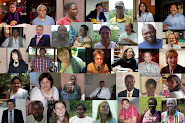 At the Design with India conference I attended in Bangalore, Geetha Narayanan, the founder of Srishti asked, is the current economic model (that pits development against the environment) the only way forward for India. While the conference showcased the work of talented commercial designers, the role of design as a means to take on social challenges was very much front and center. How can we make sure that economic development doesn’t marginalize the poor or destroy the environment? In Bangalore, the pace of development is simply staggering. New shopping malls, office complexes, residential high-rises, and a commercial airport are all mushrooming, outpacing roads, power, and water supply. The growth is dynamic and creating prosperity, but not without unwanted side effects. The idea that design can make a difference is key.
At the Design with India conference I attended in Bangalore, Geetha Narayanan, the founder of Srishti asked, is the current economic model (that pits development against the environment) the only way forward for India. While the conference showcased the work of talented commercial designers, the role of design as a means to take on social challenges was very much front and center. How can we make sure that economic development doesn’t marginalize the poor or destroy the environment? In Bangalore, the pace of development is simply staggering. New shopping malls, office complexes, residential high-rises, and a commercial airport are all mushrooming, outpacing roads, power, and water supply. The growth is dynamic and creating prosperity, but not without unwanted side effects. The idea that design can make a difference is key.Design thinking doesn’t assume that what’s gone before is what should be, or that problems are intractable. The ability to envision and enact fresh solutions is predicated on the belief that such solutions are possible in the first place. Poonam Kasturi is a designer who is building such solutions. She is created Daily Dump (http://www.dailydump.org/), an enterprise to support urban composting. Sixty percent of Bangalore’s urban waste is organic. Turning it into compost, reduces landfill and facilitates recycling of the non-organic waste, such as cardboard and plastic. Poonam’s solution is an elegant stack of earthen pots that can fit physically and aesthetically into small urban apartments. At Poonam’s design school, Srishti, alumni say what they learn that is the most important is the ability to think creatively. A broader challenge for India, is to increase the number of people who can think and create the kind of future we want.
The Center is working in India to increase the number of creative thinkers in an educational environment that has traditionally favored rote learning. In meetings with a number of educational institutions we’ve found a readiness to think about the role of creativity and leadership in preparing students for the future. We’ll have more to report on this front in the months to come.



















No comments:
Post a Comment